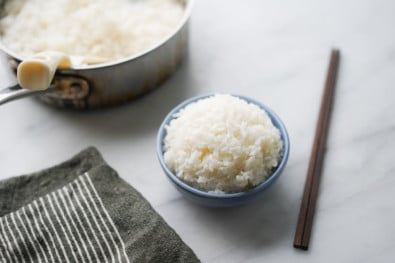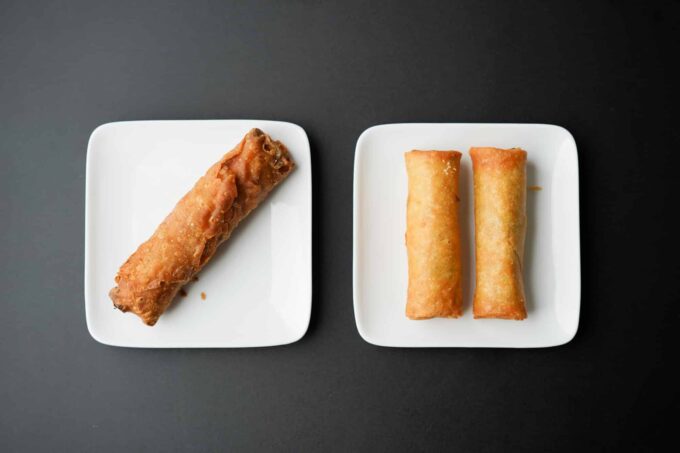
If you’ve ever had Chinese food or any other Asian food, you’ve likely seen egg rolls or spring rolls. For a long time, I was unaware that these two rolls were NOT interchangeable and that they were different dishes.
Spring rolls have variations of both fillings and wrappers depending on the type. For example, the wrappers can be made of wheat flour (that is typically deep-fried or baked) or rice flour (that can be eaten fresh and uncooked). You may have also heard spring rolls in another name like summer rolls, Vietnamese spring rolls, or vegetable rolls.
On the other hand, egg rolls have a thicker wrapper and are almost always deep-fried and they often include cabbage and meat fillings. The wrappers are thicker than spring rolls and sometimes have a bubbly exterior. These are the rolls you most typically find at Chinese American take out spots.
What are spring rolls?
Spring rolls are a dish that has two main parts: a thin wrapper (typically made of wheat or rice) and fillings (that could be any combination of meat and vegetables); The fillings are rolled in the wrapper and come in cylindrical forms with various thicknesses.
The origin of spring rolls is thought to have been from mainland China (during the Jin Dynasty 266 to 420 CE), where they rolled seasonal spring vegetables in a pancake-like wrapper to celebrate the Spring Festival.
These days you can find spring rolls at dim sum restaurants, Vietnamese restaurants, and even Filipino parties. One of the most popular fillings is minced pork and vegetables like carrots and onions. Spring rolls also come in many dessert varieties. For example, in the Philippines, they have turon, which is a deep-fried spring roll with saba banana and jackfruit and a caramel drizzle over the top.
Are spring rolls fried?
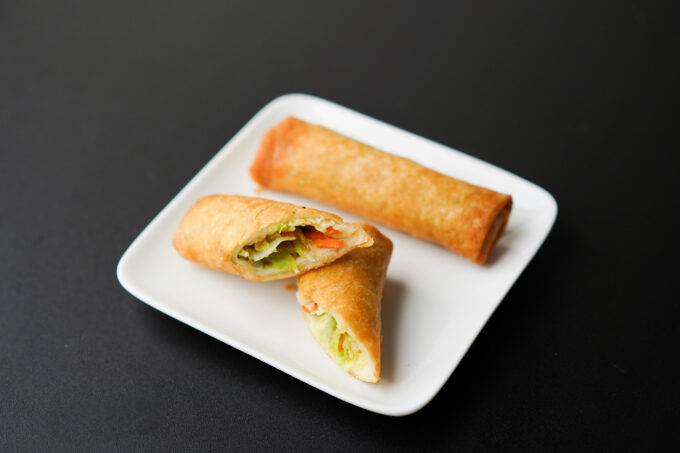
Like egg rolls, you can also fry spring rolls. One of the most popular deep-fried spring rolls are the ones you can find at dim sum, these are filled with ground pork, shredded carrots, bean sprouts, and served with a dipping sauce.
Depending on the region you will find deep-fried spring rolls like Filipino lumpia shanghai, Malayasian popiah, or Vietnamese (chả giò). Since the wrappers for spring rolls are typically thinner, they can have a light crunchy texture on the outside.
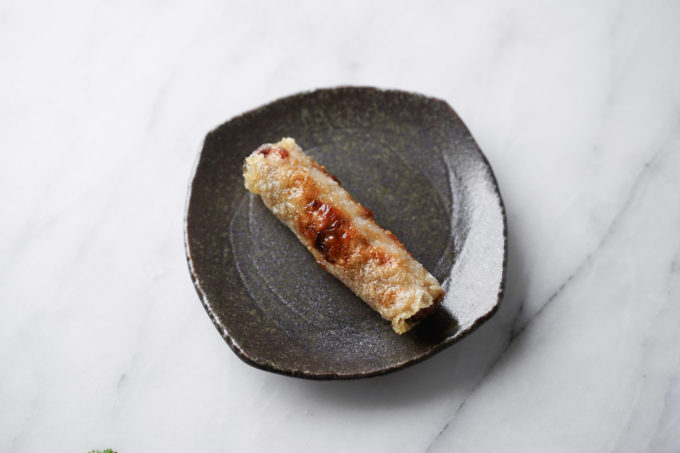
One of my favorite spring roll wrappers to use for deep frying spring rolls is Spring Home. You can find this brand at your local Asian grocery store in the freezer aisle, like 99 Ranch or online. If you have some free time on your hands, you also can make homemade spring roll wrappers.
Spring rolls vs summer rolls
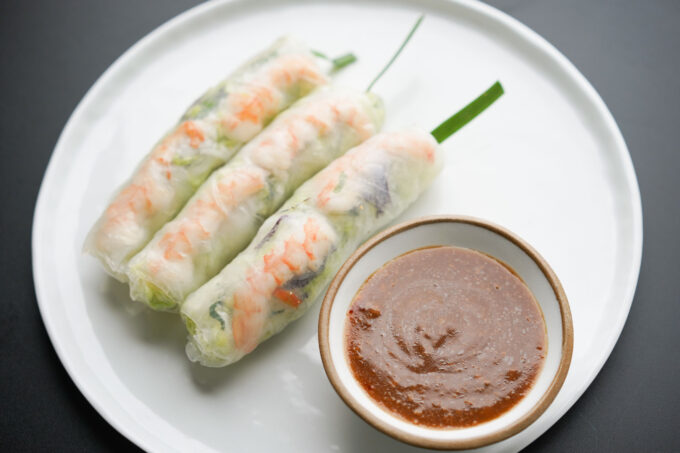
Another version of spring rolls is summer rolls (also called Vietnamese spring rolls). These rolls typically have a wrapper made of rice flour. The wrappers come dried and need to be dipped into warm water for a couple of seconds. The water softens the rice paper enough so it becomes moldable and slightly sticky enough to wrap around fresh ingredients like a variety of herbs, cooked shrimp, and rice noodles.
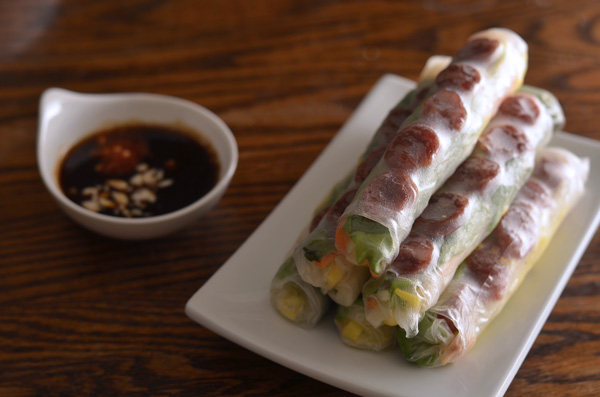
Some varieties of summer rolls are gỏi cuốn w/ peanut dipping sauce (shrimp spring rolls) and bò bía (made with Chinese sausage and eggs). These days, I have also seen new types of fresh spring rolls that include fruit as a dessert!
Learn how to wrap spring rolls at home with some new tips and tricks.
Ingredients in typical spring rolls
Depending on the recipe and variation, deep-fried and fresh spring rolls can have a mixture of meat and vegetable fillings:
- ground pork or beef
- Carrots
- shredded cabbage
- shrimp
- rice noodles
- fresh fruit
What are egg rolls?
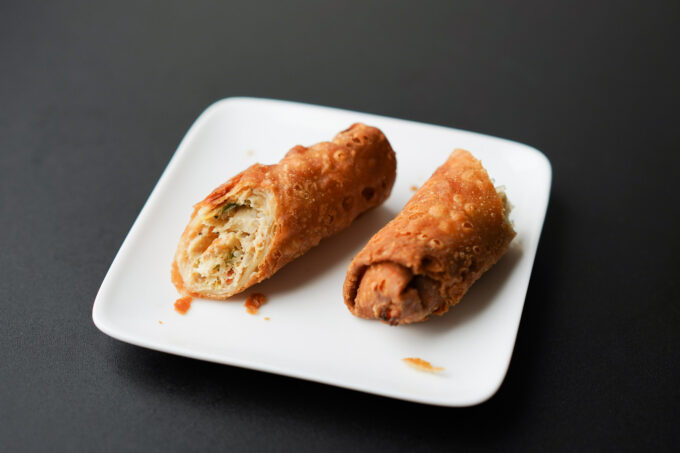
Egg rolls are a modern culinary invention and were originally influenced by Chinese spring rolls. It’s been said that egg rolls are a 20th century Americanized version of spring rolls and are now a staple in many Chinese American restaurants. If you’ve ever had deep-fried rolls at Panda Express, you’ve most likely had egg rolls.
Why are egg rolls called egg rolls?
Many people assume egg rolls (most specifically egg roll wrappers) include egg, which is why it’s named so, but it often does not contain any egg whatsoever.
It’s been thought egg rolls were influenced by a specific called Dan Gun or simply “egg roll” recipe from the Chinese American Cookbook. This dish was basically an omelet that was wrapped around bean sprouts, chicken, and ham–making it an actual egg roll.
Do egg rolls have eggs in them?
These days, egg rolls rarely are made with eggs either in the wrappers or as a filling. Instead, the thicker wrappers are typically made of wheat flour, salt, and water. When you deep-fry these wrappers, they will have a bubbly exterior. You can typically find these packed fresh in the refrigerated aisle at your local Asian grocery store.
Ingredients in typical egg rolls
Similar to spring rolls, egg rolls also have various (almost endless) types of fillings depending on where you order them:
- chopped meat
- shredded cabbage
- carrots
- tofu
- bean sprouts
Lumpia vs egg rolls
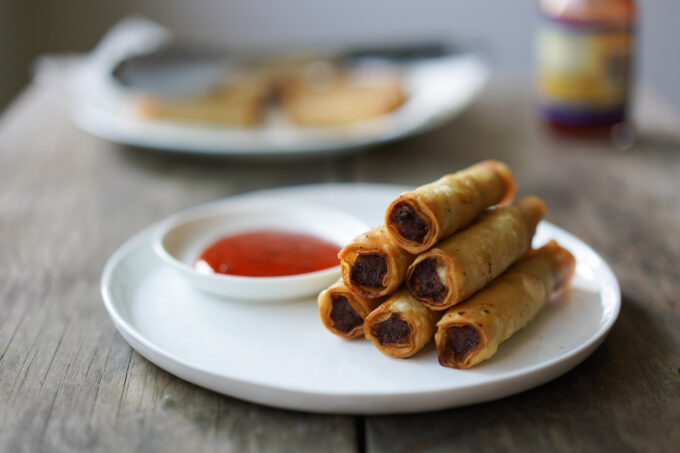
If you’ve ever been to a Filipino party, you know it’s not complete without a side, appetizer, or second helping of lumpia. While some might call lumpia, Filipino egg rolls, they’re actually spring rolls because of the very thin, smooth wrapper and origin.
Lumpia was a direct influence from Chinese travelers in the Philippines during the 9th century. Lumpia Shanghai is just one version of these Filipino spring rolls because there are many versions that include fresh spring roll wrappers and dessert varieties.






